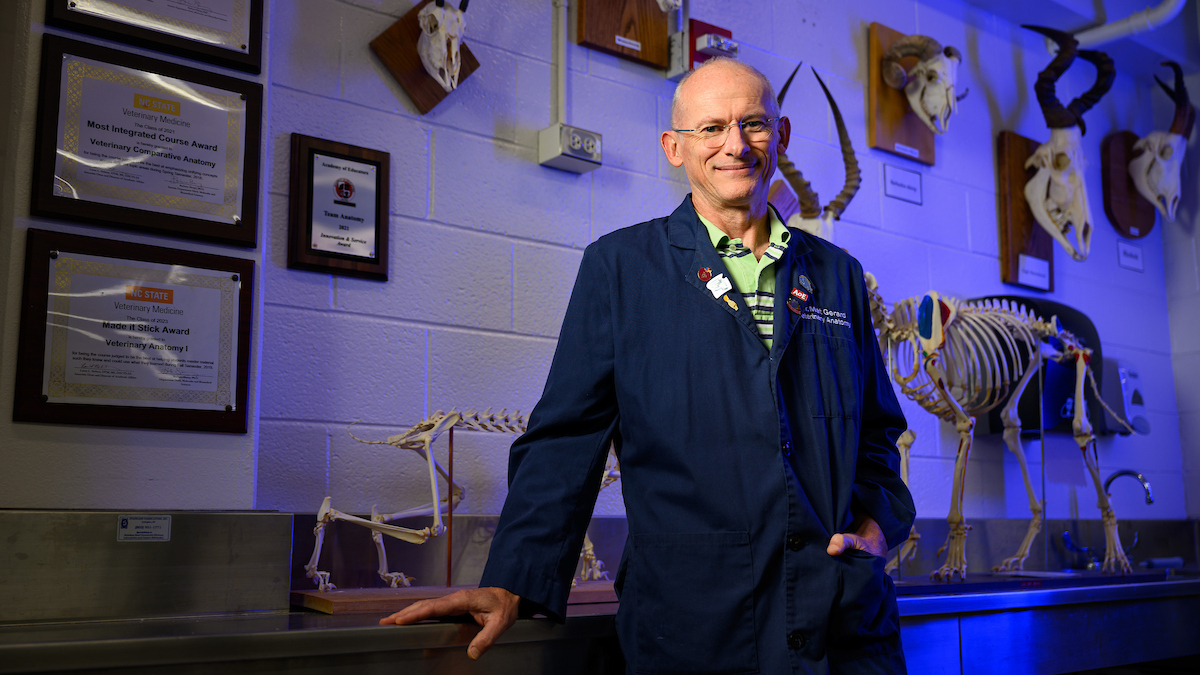CVM Researchers Investigate Convenience Food Pathogen
A team of CVM researchers is studying a bacterium that, though commonly found in ready-to-eat foods, can have the highest mortality rate of any food-borne pathogen for individuals with predisposing conditions such as weakened immune systems.
The research team includes Drs. Paul Orndorff, Edward Havell, and Jill Barnes and research specialists Patricia Spears and Marion Suyemoto of the CVM as well as Dr. Terri Hamrick of Campbell University’s School of Pharmacy.
Listeria monocytogenes is a common bacterium existing in soil and water. Vegetables can become contaminated from the soil or from manure used as fertilizer. Animals may carry the bacterium without appearing ill and can contaminate foods such as meats and dairy products. The bacterium can multiply at refrigerator temperatures and has been found in large numbers in a variety of raw foods as well as in foods that become contaminated after processing, such as hot dogs, soft cheeses, and luncheon meats.
The presence of Listeria in food processing plants has considerable public health significance, resulting in disease outbreaks and large-scale recalls of processed foods. When ingested, Listeria may enter the blood stream and cause listeriosis, a severe systemic disease resulting in fever, muscle aches, nausea, and diarrhea. If infection spreads to the nervous system, symptoms such as headache, stiff neck, confusion, loss of balance, or convulsions can occur.
An estimated 2,500 persons become seriously ill with listeriosis in the U.S. each year. Of these, 500 die. Afflicted individuals usually have predisposing conditions that increase susceptibility. Pregnancy is the most common predisposing factor, and infected pregnant women may only experience a mild, flu-like illness. Infections during pregnancy, however, can lead to premature delivery, miscarriage, stillbirth, or infection of the newborn. Others susceptible to the disease include newborns, individuals with weakened immune systems, the elderly, and individuals taking anti-inflammatory medications. Healthy adults and children occasionally get infected, but they rarely become seriously ill.
“Despite the known association of listeriosis with pregnancy, there is an incomplete understanding of how pregnancy increases disease risk,” says Dr. Orndorff. “There is evidence that the ability of circulating bacteria to cross the placenta and infect the embryo is critical to disease progression. Our studies suggest that a small proportion of pregnant animals with demonstrable circulating Listeriae acquire a placental infection. Such an infection, however, can terminate the pregnancy and indicates a poor prognosis for the mother.”
The team’s research indicates that animals being studied become prone to disease early in pregnancy, at times coinciding with the implantation of the embryo in the uterine wall. Results of the CVM research, according to Dr. Orndorff, may encourage a more thorough microbiological investigation of miscarriages that occur relatively early in pregnancy and alert physicians to the possibility that increased susceptibility to listeriosis begins much earlier in pregnancy than is presently assumed.
The collaborative research is part of the Center for Comparative Medicine and Translational Research located on the Centennial Biomedical Campus.
Nov. 16, 2007


